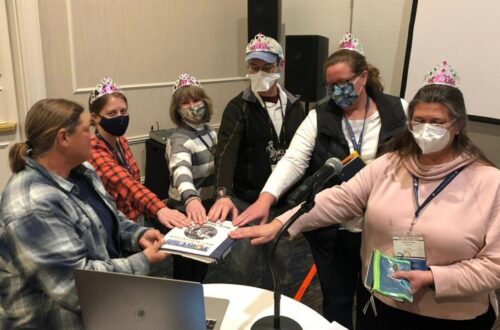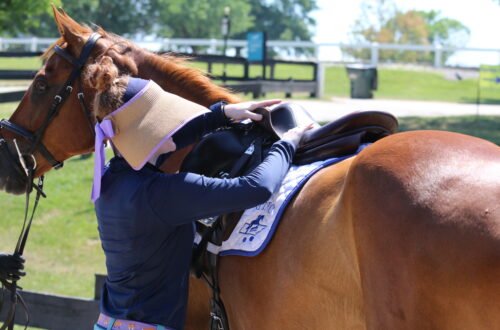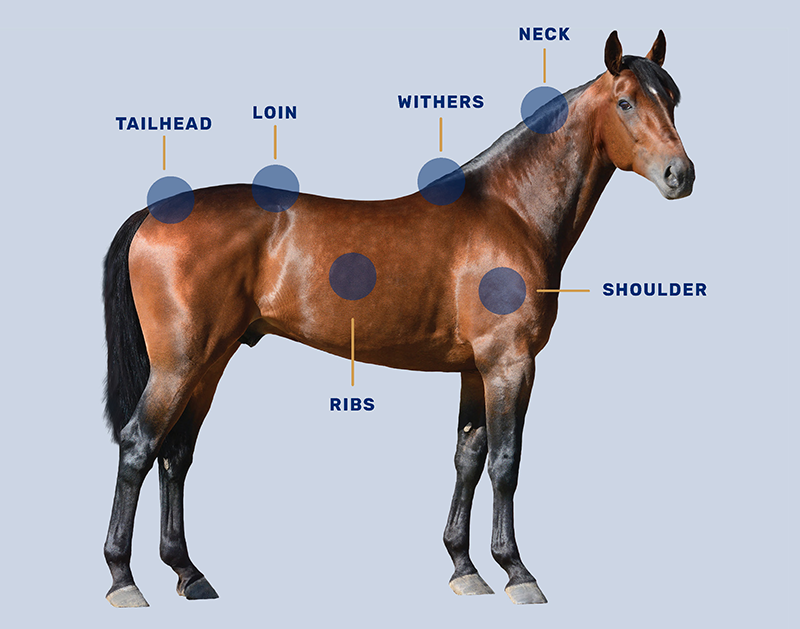
How to Score Your Horse’s Body Condition
Article and Images Provided by Triple Crown Nutrition, the Official Feed Sponsor of USPC
Any time of year is a great time to body condition score your horses and ponies and evaluate if you should make any important diet and management changes so that your horse is as healthy and fit as he can be. Sometimes a horse may be a bit too chunky, or a bit too thin, and so you may need to talk with a veterinarian or an equine nutritionist to help optimize his diet so that you can get him into an ideal body condition score.
Horse Body Condition Scoring
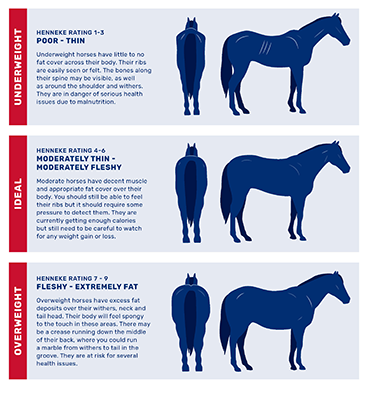
The Henneke Body Scoring System (developed by Don Henneke, PhD, of Texas A&M University) is a standardized body condition system that is widely used in the horse industry for scoring a horse’s body condition. The system rates the horse on a scale of 1 to 9. A score of 1 is considered very poor or emaciated and a 9 is extremely fat or obese. Veterinarians consider a score between 4 and 6 to be acceptable, with 5 considered ideal.
Body scoring is an important skill to master and something every horse owner should know how to do. You can even set up monthly or quarterly body scoring parties with others at your barn to get multiple perspectives when evaluating your horse.
The scoring process is a hands-on and visual examination. First, have your horse stand squarely and assess six key areas on their body—neck, shoulder, withers, ribs, loin, and tailhead. Apply pressure to feel on and around each area and then rate each one on a scale from 1 to 9. Combine these scores and divide by 6 to get an overall body condition score for your horse or pony.
What if your horse doesn’t get an “ideal” body score? Here are some common scenarios and feeding recommendations for each.
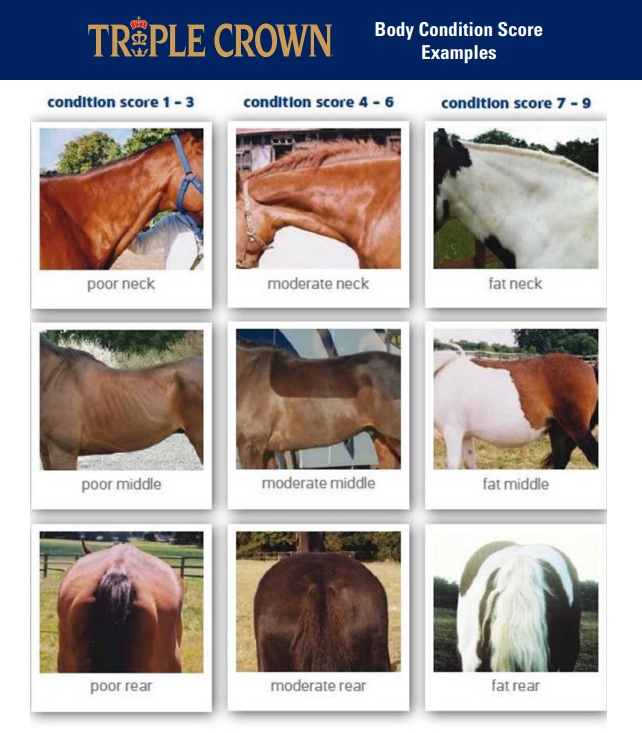
The Overweight Easy Keeper
Do you have an equine that has gotten a little overweight? This can happen easily with horses out on lush pastures or those who might have had some time off. Here are some tips to get them back on track:
- Always consult your veterinarian if a horse shows signs of any metabolic issues, such as insulin resistance, or lameness (which could be laminitis); immediate preventive care is very important.
- Exercise is key to weight loss, so develop a plan for routine activity.
- Monitor consumption of hay/pasture/forage.
- Test your hay supply for calories and starches and sugars, or nonstructural carbohydrates (NSC).
- Use slow-feed hay nets, grazing muzzles, or move your horse to a dry lot.
- Feed a nutrient-dense ration balancer to cover daily vitamin and mineral needs.
- Remove unnecessary feeds and supplements.
- Monitor diet and exercise, and work to get them back to an ideal body score.
The Underweight Hard Keeper
Has your active horse gotten a bit lean? Work, travel, and stress can keep them from putting on enough weight or cause them to lose weight. Whether you will continue riding as often or not, you want to get them into an ideal body condition heading into more difficult seasons, such as winter, when they need to have a good body condition score to help them regulate their body temperature and stay warm. Here are some things to consider:
- Consult your veterinarian regarding dental concerns or if there is a concern about ulcers or other health issues that may hinder weight gain.
- Be sure your horse is on the proper feed at the right amount for their needs. This could mean bumping up the amount of feed or moving to a higher fat option to help with weight gain.
- Ensure your horse is getting 1.5-2% of their body weight in forage daily. If quality pasture or access to pasture is not an option, they will need adequate quality forage, such as hay/hay cubes/pellets or another source, to support their needs.
- Test your current hay supply so you know what your forage is providing for nutrition and calories. Seek out higher-calorie hays like alfalfa and/or a supplement with cubes, pellets, or chopped forage products.
- Assess your feeding schedule. Feeding two or more times a day allows for smaller, more frequent meals for your horse, which can help improve nutrient digestibility.
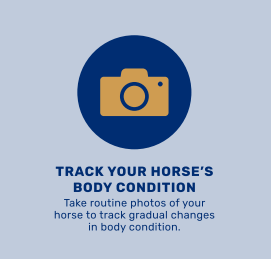
Remember these tips and the importance of assessing your horse’s body condition score, especially before winter, so that you can identify any diet or management changes that may need to be made.
Selecting the right feed for your horse or pony may not be easy, but it is an important task to ensure they are getting the best feed at proper amounts to help set them up for success and a healthy life. The experts at Triple Crown are available to help create a feeding program to meet your horse’s nutritional needs. If you have additional questions, talk to a Triple Crown feed expert at www.triplecrownfeed.com or call 800-451-9916.
This article on Body Condition Scoring was originally published in the 2023 Bonus Digital issue of Discover USPC magazine. Read more content from that issue.

About Triple Crown Nutrition — Official USPC Feed Sponsor
Triple Crown offers premium equine feeds that provide the exact nutrition your horse needs, designed to help support immunity and gut health. Learn more at TripleCrownFeed.com.



